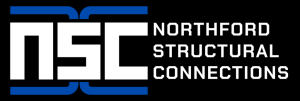A Beginner’s Guide to Double-Tee Shear Connections
Double-tee shear connections, integral in precast concrete construction, facilitate structural support and load transfer between elements. Understanding these connections is critical for designers, engineers, and contractors who prioritize efficiency, safety, and longevity in their projects. This guide offers a thorough breakdown of double-tee shear connections, their components, applications, design considerations, and advantages.
Understanding Double-Tee Shear Connections
Double-tee shear connections consist of two main components: the double-tee unit itself and the anchoring mechanism attached to other structural elements, typically beams or columns. The shear connection allows for horizontal load transfer while maintaining vertical stability. Typically used in parking garages, warehouses, and large commercial buildings, these connections are paramount in ensuring structural integrity.
Components of a Double-Tee Shear Connection
- Double-Tee Units: Fabricated from precast concrete, double-tees feature two flanges at the top and a web in the center, resembling the letter ‘T’ when viewed from the side. These elements are efficient in resisting bending and shear forces due to their shape.
- Shear Key: A shear key is a vital component that helps transfer shear forces between the double-tee and the supporting structure, accommodating movement while providing stability.
- Connection Hardware: Bolts, welds, or other mechanical fasteners secure the double-tee to the surrounding structure. This hardware must be precisely selected and installed to ensure optimal load transfer.
Applications of Double-Tee Shear Connections
The applicability of double-tee shear connections extends to various industries, primarily due to their effectiveness and efficiency:
1. Parking Structures
In parking garages, double-tee shear connections are essential for creating flat, open spaces with minimal columns. Their lightweight design allows for expansive floor areas, fostering safe vehicular movement and increased usability.
2. Commercial Buildings
Retail and office spaces benefit from double-tee connections. They enable quicker construction times and provide a robust solution for handling loading conditions, enhancing overall building performance.
3. Industrial Facilities
In warehouses and manufacturing plants, double-tee shear connections support heavy loads and dynamic forces from equipment and materials. Their robust nature ensures resilience and longevity.
Design Considerations
Designing double-tee shear connections necessitates a comprehensive analysis of factors affecting performance:
1. Load Requirements
The design must account for all potential loads, including dead loads, live loads, and environmental factors. Understanding how these loads interact with the double-tee and connected elements is crucial for safety.
2. Movement and Expansion
Buildings experience shifts due to thermal expansion, settling, or seismic activity. The connection design should accommodate these movements without compromising structural integrity.
3. Concrete Strength
The choice of concrete mix affects the overall performance of the double-tee shear connection. Selecting an appropriate mix ensures adequate strength and durability under varying conditions.
Advantages of Double-Tee Shear Connections
Double-tee shear connections offer several benefits that make them a preferred choice in precast concrete construction:
1. Speed of Construction
Using precast double-tees allows for faster assembly. Pre-manufactured components can be swiftly installed, reducing project timelines significantly.
2. Structural Efficiency
The unique shape of double-tees provides optimal load-bearing capability. They distribute loads evenly, minimizing the potential for structural failure.
3. Minimal On-Site Labor
With much of the construction happening off-site, there is less reliance on labor to handle heavy materials on-site. This leads to cost savings and improved safety conditions.
Conclusion
In summary, double-tee shear connections play a pivotal role in precast concrete construction, offering a balance between functionality and efficiency. Understanding their components, applications, design considerations, and advantages equips contractors and engineers with the knowledge to implement these systems effectively. As construction technology continues to evolve, the importance of double-tee shear connections will remain a fundamental aspect in the realm of structural engineering.







